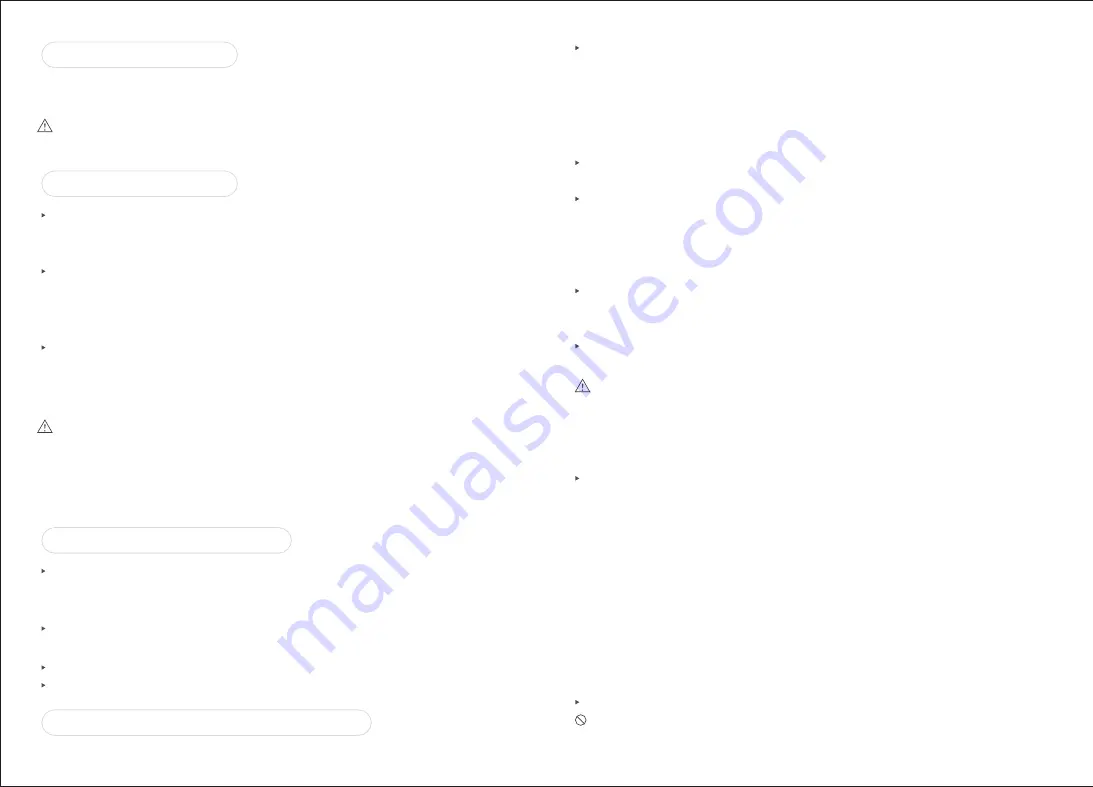
Negative pressure regulating
Inspection & test on the overflow device
Note: Dredge the suction catheter if blocked as per the following method:
Bend the suction conductor in "V" form (with no liquid in the holder), and
release it to the original status when the negative pressure reaches up to
the maximum value. Repeat this procedure several times till the catheter is
not blocked.
Block the suction inlet, open the aspirator switch and regulate the negative
pressure valve, and the readings on the pressure meter shall be within 0.02
MPa ~ limit negative pressure.
Control the negative pressure as required for suction by means of the
negative pressure valve at the time of clinical practice.
Increase the negative pressure by turning the valve clockwise.
Reduce the negative pressure below 0.02 MPa prior to power shut-off.
Turn tightly the negative pressure regulating valve clockwise, and block the
air suction inlet with the finger or the rubber head of dropper, or fold up and
hold the suction tube.
Start the aspirator for running with no strange sound; the pointer of the
vacuum meter will quickly reach up to the limit negative pressure. Release
the air suction inlet, the pointer will return below 0.02 Mpa. If so, the
connector can be regarded as being in good connection.
Attach the phlegm suction catheter. The negative pressure in the negative
pressure system shall be less than 0.07 MPa at the time of attaching F8
suction catheter, less than 0.03MPa when attaching F12 suction catheter. If
so, the phlegm aspirator is considered as being in normal condition.
Connector inspection
4
Power
line
connection
Connect the plug with the power source. Turn on the power supply, and the
power indicator will illuminate.
Note: The power plug is used for power shut-off, and the power socket
shall be grounded reliably.
Note:
1. The liquid level still continuously ascends after the overflow device has
been shut off, possibly due to:
(1) Residual negative pressure still in the holder.
(2) Valve mouth not fully closed.
For Item (1), the liquid level in the holder will not ascend when the suction
tube conductor is placed again into the liquid as suctioned, and for Item (2),
the liquid level still ascends. Thus, it is required to observe carefully, and lift
immediately the conductor out of the suctioned liquid when the holder is
close to full, then, switch off the aspirator to stop suction, and examine the
possible reason of the valve fault.
2. The float is still adhered on the valve mouth as already closed by the
float, possibly due to the negative pressure in the line. At this moment,
release the regulating valve or shut off the aspirator (to release the
negative pressure in the line), the float will descends from the valve mouth
under the action of gravity. (It is forbidden to pull the float with hand, in
order to avoid the rubber valve clack being separated from the float).
After shut-off, release the negative pressure, then, open the holder plug;
Never use the aspirator under the condition of the overflow device & the
conductor dismantled.
Open the holder plug; clean up the valve mouth, and leveling the rubber
valve clack on the float. The valve clack shall not be warped, bent and
broken, but well connected with the float. The float shall be able to move
freely in its support without any blockage, lift the holder plug with hand to
make the float contact the water surface perpendicularly gradually lower
the holder cover to let the float rise.
Tighten the hold plug, attach the suction tube conductor at the inlet, and
screw firmly the regulating valve, then, actuate the aspirator.
Put the suction conductor into one clean water pail or attempt to simulate
actual application to suction the liquid into the holder of the overflow device.
As a result, the float will rise as the liquid level ascends until the valve is closed
and suction stops automatically. The final position of liquid level depends on the
suction process adopted.
Release the regulating valve, set the aspirator switch off, open the holder plug
and empty the liquid in the holder. The float shall be at the bottom of the support
and the valve is in open status in case of re-screwing firmly the hold plug.
If so, the overflow device is considered as being in normal condition, which can
be used for clinical practice.
5



























